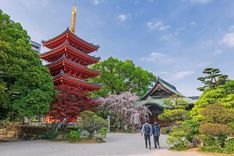- Shiretoko Peninsula: best UNESCO site in Japan for elemental splendour
- Shirakami-Sanchi: soulful immersion in primal forests
- Ogasawara Islands: an Eden of endemism and deep-blue seas
- Yakushima: ancient arboreal majesty and mystical mountains
- Amami and the northern part of Okinawa Island: evolution unveiled
Chances are, when you think of Japan, your mind’s eye summons images of Kyoto’s timelessly elegant temples, or Tokyo’s futuristic neon glow. But hold that thought, and think again. Not only a country of culture, Japan is also a nation of nature. Boasting five UNESCO World Natural Heritage sites, it’s home to some of the rarest, most extraordinary ecosystems on earth, with over 70% of its magnificent mass cloaked in forests. Encompassing majestic mountains, primal forests and remote subtropical islands, read on to discover why the Land of the Rising Sun needs to be on your radar as a remarkable place to get back to nature as we share highlights of natural UNESCO sites in Japan — joy-giving destinations that are well worth including in your Japan itinerary.
Shiretoko Peninsula: best UNESCO site in Japan for elemental splendour

Shiretoko Peninsula © AdobeStock
The name says it all. In the language of the indigenous Ainu people, Shiretoko is derived from “sir etok”, meaning “end of the earth”. It’s an untouched wilderness of sheer cliffs that plunge into icy waters. Of forests, rivers, wetlands and waterfalls. Largely roadless, the peninsula feels beyond the reach of humans. Indeed, Shiretoko is the domain of soaring Steller’s sea eagles, Blackiston’s fish owls, red foxes and killer whales.
Above everything, Shiretoko is a place of natural theatre — a slither of land slicing into the Sea of Okhotsk from the most north-easterly tip of Hokkaido, with a range of jagged volcanic mountains forming its spine.
On its shores, seasonal sea ice forms at the northern hemisphere’s lowest latitude, birthing plankton that blooms, nourishes and connects creatures of land and sea. So, though a region of raw natural energy, Shiretoko is also subtle, balancing a complex web of life-sustaining links that showcase nature at its most elementally pure.
Shirakami-Sanchi: soulful immersion in primal forests
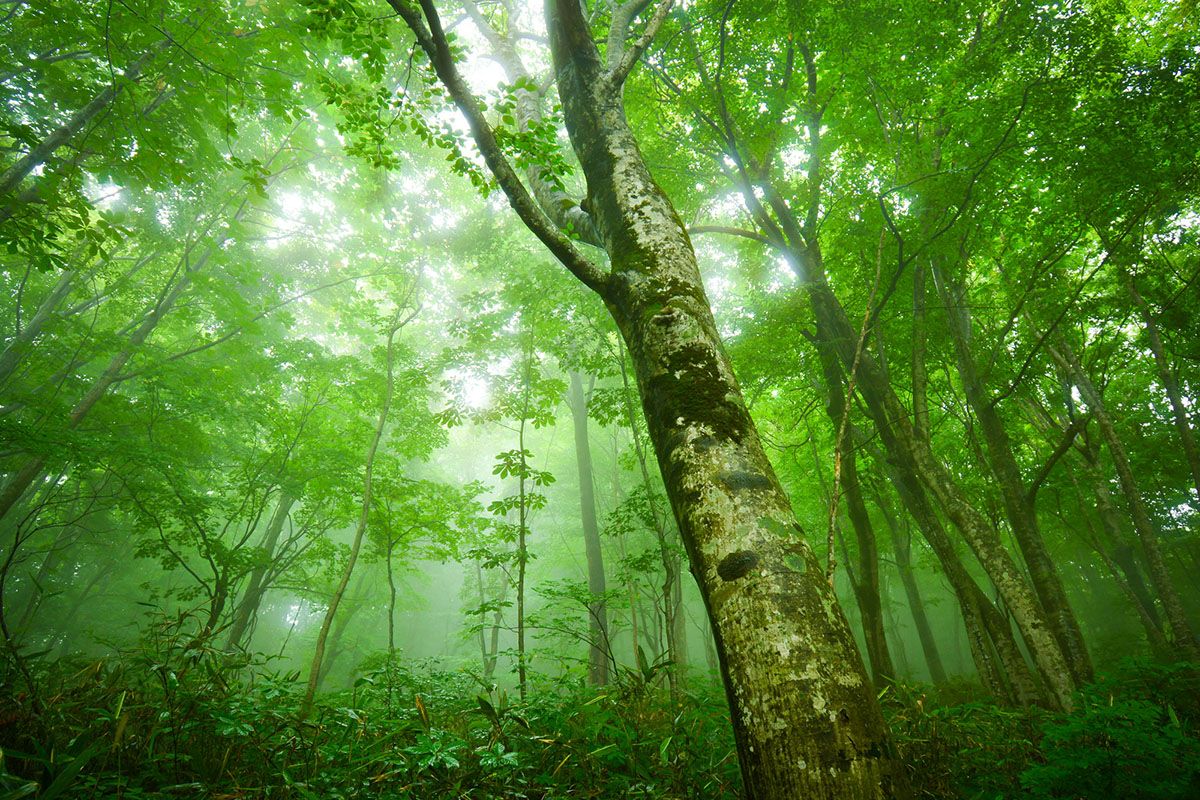
Shirakami-Sanchi © Pixta
There’s something bone-deep soulful about Shirakami-Sanchi. Immersion in nature flows easy here, as demonstrated by the Matagi hunter-gatherers who’ve lived in synergy with its seasonal rhythms for centuries.
Stretching from the southwestern Aomori Prefecture to northwestern Akita Prefecture in the north of Japan’s main island, Shirakami-Sanchi shields one of the last remaining virgin Siebold’s beech forests in East Asia, and some of the largest expanses of virgin beech forest in the world, giving rise to its UNESCO World Natural Heritage Site status and Forest of the Gods moniker.
With its central area untouched by human industry, Shirakami-Sanchi’s ancient beech forest hosts martens, macaques, Japanese serows and several species of eagle. While landscapes of sharp ridges, deep valleys and plunging gorges serve as the dramatic backdrop for walks on the wild side, the jade-hued Juniko Lakes invite reflection, and the awe-inspiring Anmon Falls surge with kinetic forces that have a habit of making visitors feel truly alive.
Around the year, Shirakami-Sanchi’s seasonal shifts seem to be conjured by ancient magic, from the budding of lime-green leaves in spring as rivers rush with melting snow, to fall’s fire-toned foliage, and the deep silence of snowy winters. In short, Shirakami-Sanchi is nature at its most powerfully poetic. As a result, it’s one of the best UNESCO sites in Japan to feel utter immersion in nature.
Ogasawara Islands: an Eden of endemism and deep-blue seas
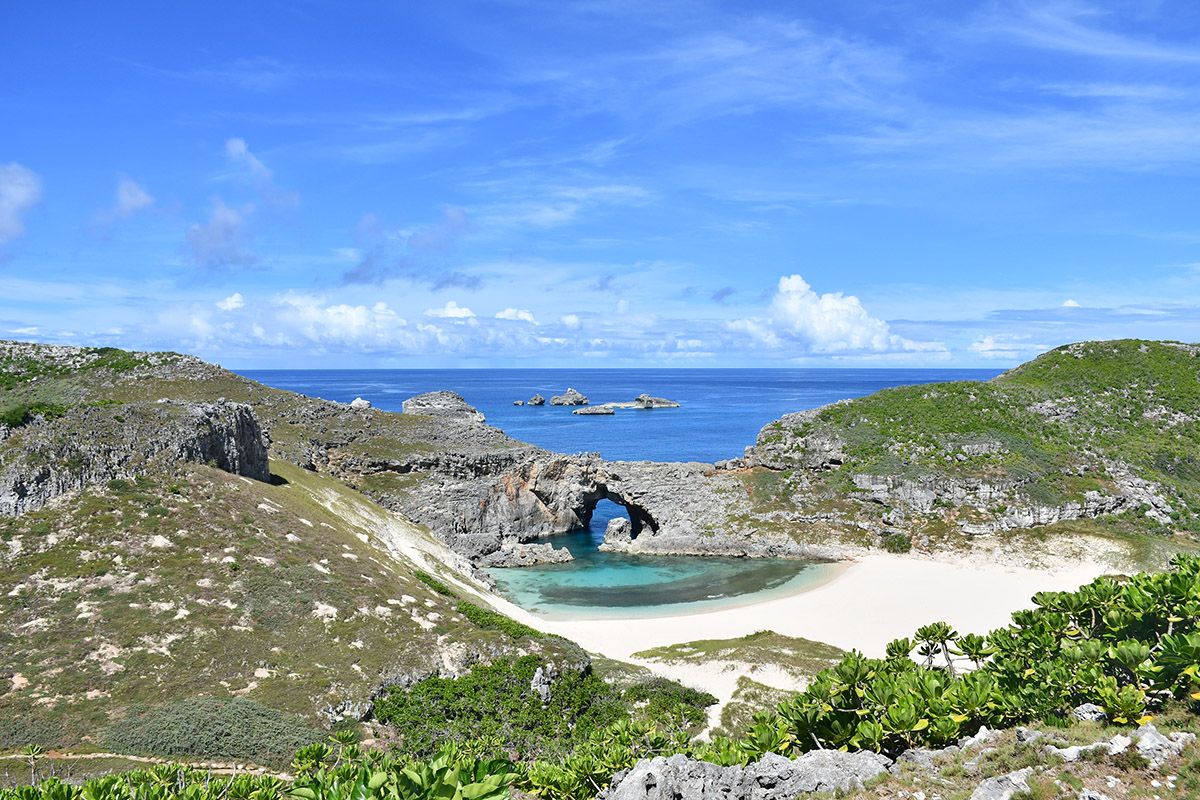
Minami-jima, Ogasawara Islands
Accessible from central Tokyo via a 24-hour ferry, the subtropical Ogasawara Islands, also known as the Bonin Islands, boast glorious landscapes of towering cliffs, crescent-shaped coves and subtropical forests, along with Galápagos-level endemism, the latter of which coming as a result of the islands’ oceanic origins — they formed over millions of years, unconnected to any continent.
Largely under the radar internationally, lucky visitors to this remote paradise can choose to base themselves on either of two inhabited islands. Chichijima (“Father Island”) is the biggest of the pair, and best for easier access to the likes of whale watching trips and beach-break comforts.
Meanwhile, smaller, quieter Hahajima (“Mother Island”), reached from Chichijima in around two hours by ferry, offers ridge hikes and jungle treks across landscapes that are rich with endemic flora and fauna.
Collectively, the Ogasawara Islands are a dream for divers, snorkellers and marine-life-lovers. In fact, their showstopping sapphire-hued waters have their own name, Bonin blue, and play host to stacks of cetaceans, including Indo-Pacific bottlenose and spinner dolphins, with seasonal sightings of humpback whales and sperm whales. As such, the Ogasawara Islands are as alluring to water babes as they are to land-lubbing hikers and serenity-seekers.
Yakushima: ancient arboreal majesty and mystical mountains
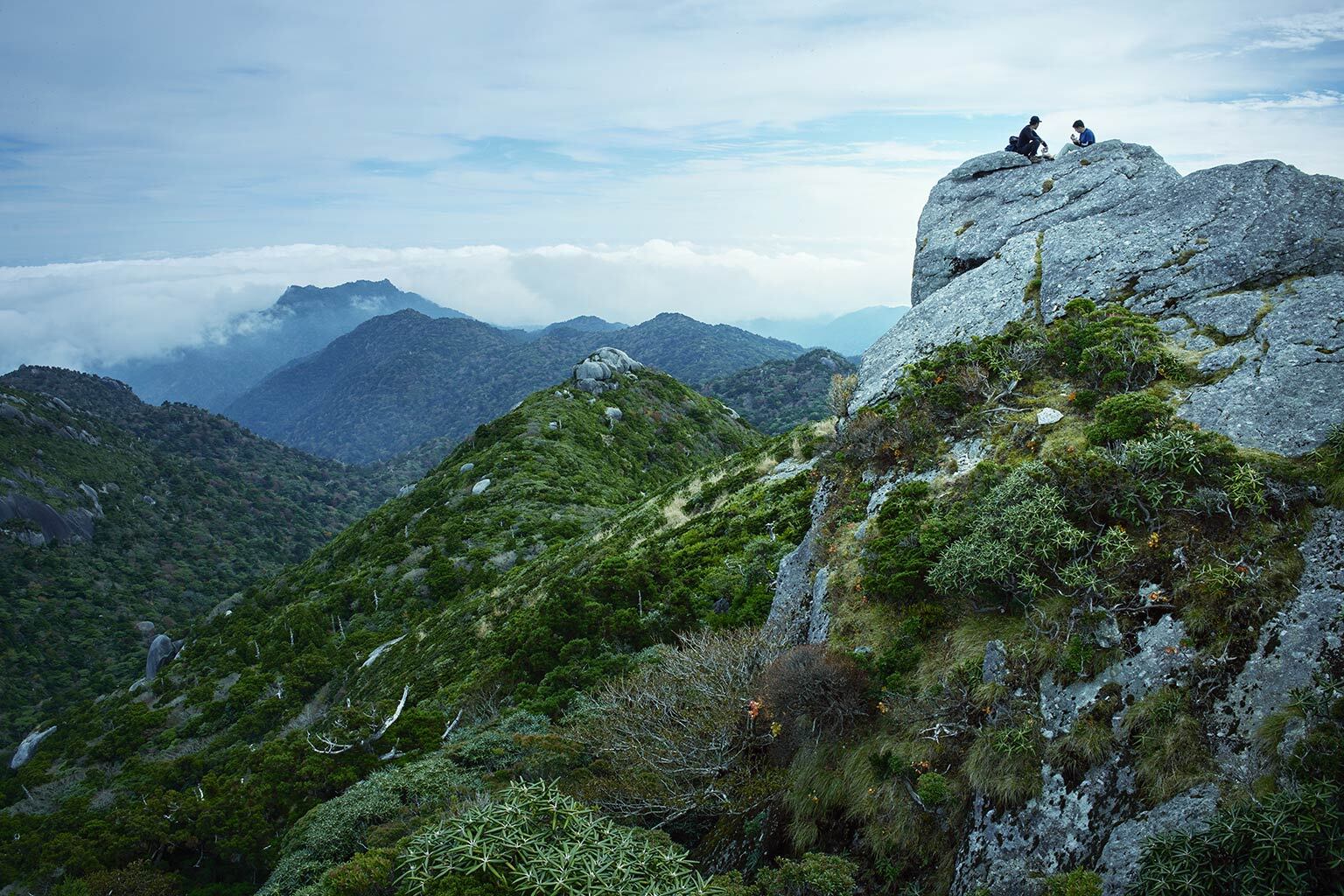
Mt. Kuromi, Yakushima
Visitors to Yakushima might be forgiven for thinking they’ve passed through a portal to a lost fairy-tale kingdom of moss-carpeted forests and knotted roots. Located off the southern coast of Kyushu, the subtropical island appears to float in the ocean, its silhouette serving a breath-taking scene of steep granite peaks, ten of them over 1800 metres, 46 over 1000 metres. As a result, the island has earned an “Alps of the Ocean” sobriquet.
From Yakushima’s coastline of craggy coves and beaches, where turtles nest, mountains rise sharp to primeval temperate rainforests. In fact, 90% of the island is cloaked in dew-dipped forests that see woodland wildlife materialise between ancient cedar trees.
Here, you’re likely to spot endemic Yakushika deer and Yakushima macaques while walking wet, winding trails — rainfall is abundant around these parts, and nourishes native forests presided over by gnarled giants in the form of ancient cedar trees. For example, the Jomonsugi Cedar is estimated to have exceeded the ripe old age of from around 2,000 to 7,200 years old.
Emerald and ethereal, Yakushima’s uncanny allures invite visitors to embrace nature’s sacred side at every turn. Little wonder, then, that the island has long been a place of pilgrimage, with paths twisting up through forested highlands to shrines, where offerings are made to take-mairi mountain deities.
Amami and the northern part of Okinawa Island: evolution unveiled
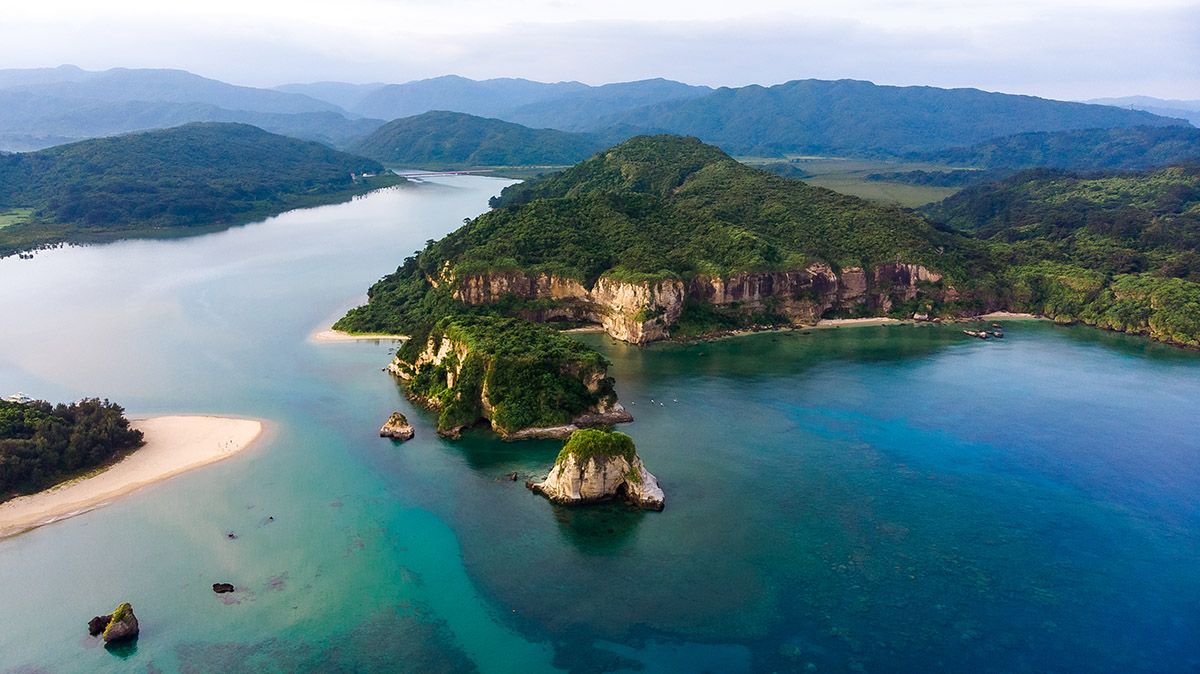
Iriomote Islands
Encompassing Amami-Oshima, Tokunoshima, Northern Okinawa and the Iriomote Islands, this subtropical archipelago, located southwest of Kyushu, was esteemed with World Natural Heritage Site status as a result of its remarkable number of rare and endemic species. In fact, this is one of the most biodiverse places on the planet — an area that showcases evolution in all its mind-boggling wonder.
Once connected to Honshu and the Eurasian continent, post-glacial rising sea levels left the archipelago isolated, resulting in flora and fauna taking their own evolutionary twists and turns while adapting to each island’s distinct eco-systems over millions of years.
So, though united by their humid subtropical climate, beautiful beaches and biodiversity, there are notable differences between islands. Amami-Oshima, for example, is a wonder of tangled mangroves, mountains and snaking rivers, while Iriomote is pretty-much covered in primeval forest, and Tokunoshima is a place of limestone cliffs, volcanic sea arches and a series of oddly shaped rocks formed by erosion.
At the same time, these islands are rich in traditional crafts and customs, with Amami-Oshima celebrated for its unique mud-dying traditions, and Tokunoshima noted for its age-old salt-making practices.
All of which proves that UNESCO sites in Japan aren’t only about nature — culture and environment are typically harmoniously intertwined around these spectacular regions.

Amami-Oshima
If that’s whet your appetite for exploring Japan as a nation of nature and you’re minded to include UNESCO sites in Japan in your Japan itinerary, you might want to read up on the outdoor experiences that can be enjoyed in each destination, and wise up on their respective wildlife wonders.








